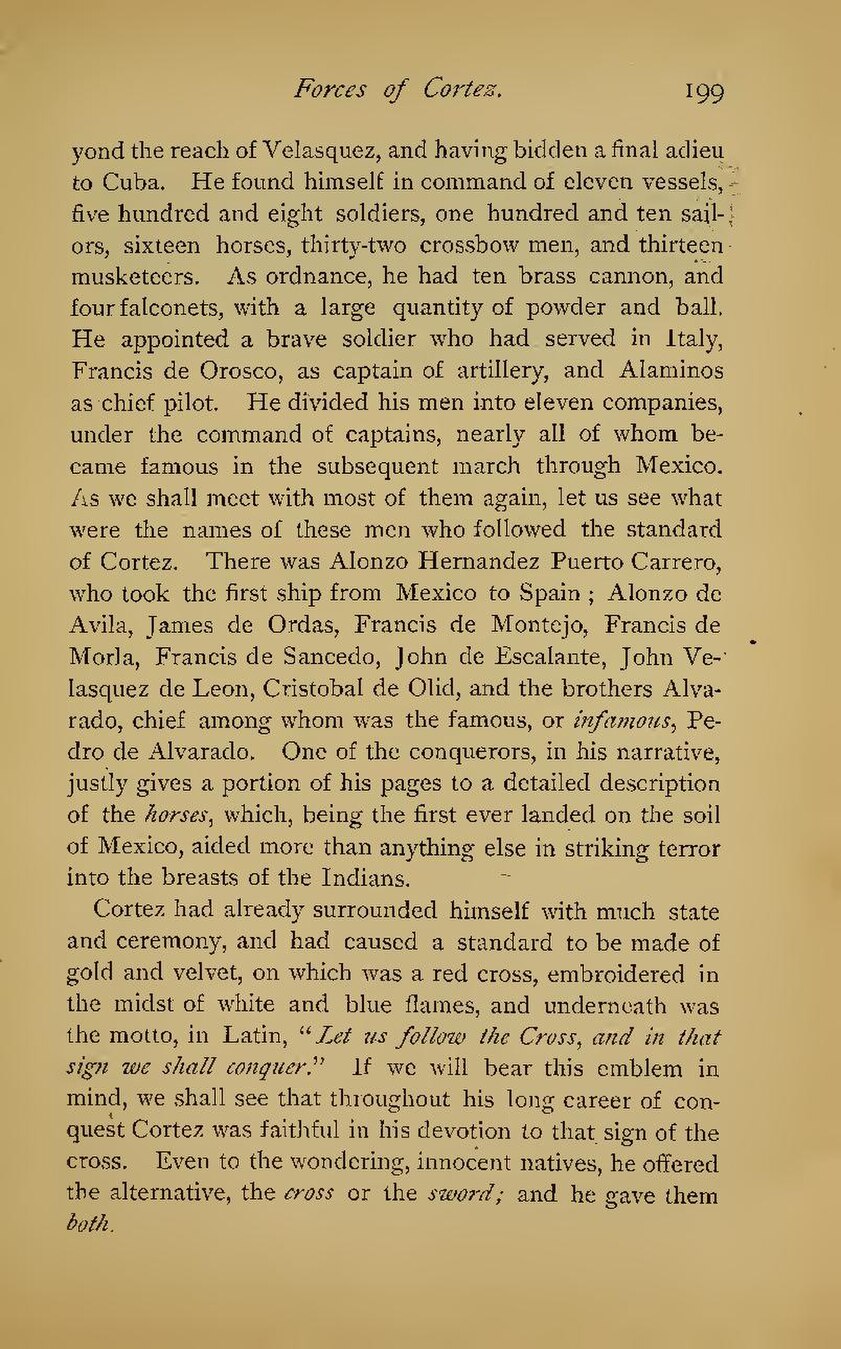yond the reach of Velasquez, and having bidden a final adieu to Cuba. He found himself in command of eleven vessels, five hundred and eight soldiers, one hundred and ten sailors, sixteen horses, thirty-two crossbow men, and thirteen musketeers. As ordnance, he had ten brass cannon, and four falconets, with a large quantity of powder and ball. He appointed a brave soldier who had served in Italy, Francis de Orosco, as captain of artillery, and Alaminos as chief pilot. He divided his men into eleven companies, under the command of captains, nearly all of whom became famous in the subsequent march through Mexico. As we shall meet with most of them again, let us see what were the names of these men who followed the standard of Cortez. There was Alonzo Hernandez Puerto Carrero, who took the first ship from Mexico to Spain; Alonzo de Avila, James de Ordas, Francis de Montejo, Francis de Morla, Francis de Sancedo, John de Escalante, John Velasquez de Leon, Cristobal de Olid, and the brothers Alvarado, chief among whom was the famous, or infamous, Pedro de Alvarado. One of the conquerors, in his narrative, justly gives a portion of his pages to a detailed description of the horses, which, being the first ever landed on the soil of Mexico, aided more than anything else in striking terror into the breasts of the Indians.
Cortez had already surrounded himself with much state and ceremony, and had caused a standard to be made of gold and velvet, on which was a red cross, embroidered in the midst of white and blue flames, and underneath was the motto, in Latin, "Let us follow the Cross, and in that sign we shall conquer." If we will bear this emblem in mind, we shall see that throughout his long career of conquest Cortez was faithful in his devotion to that sign of the cross. Even to the wondering, innocent natives, he offered the alternative, the cross or the sword; and he gave them both.
